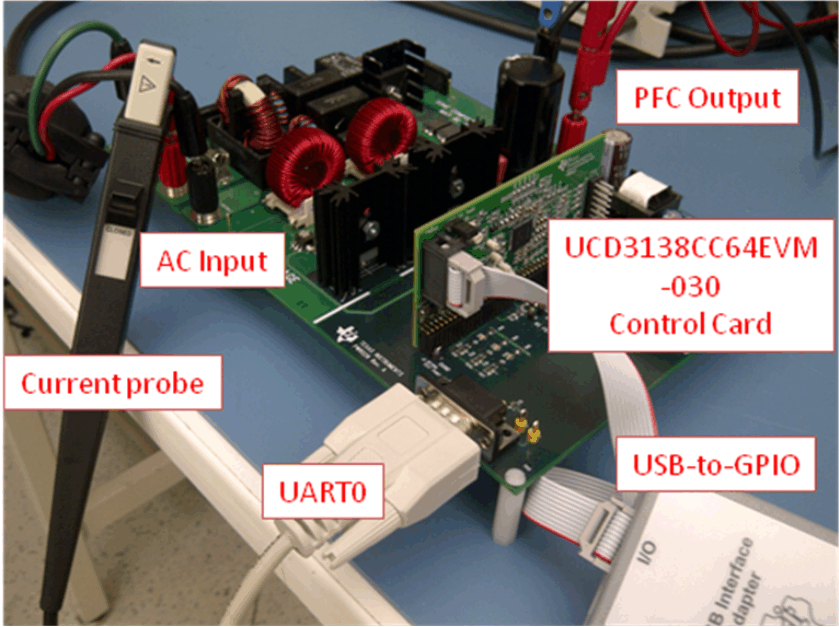SLUU885C March 2012 – June 2024 UCD3138 , UCD3138064 , UCD3138064A , UCD3138128 , UCD3138A , UCD3138A64
- 1
- 2
- Abstract
- 1 Introduction
- 2 Description
- 3 Electrical Performance Specifications
- 4 Schematics
- 5 Test Setup
- 6 List of Test Points
- 7 List of Terminals
- 8 Test Procedure
- 9 Performance Data and Typical Characteristic Curves
- 10EVM Assembly Drawing and PCB Layout
- 11List of Materials
- 12Digital PFC Description
- 13Evaluating the Single-Phase PFC with GUI
- 14Monitoring, Re-configuring and Re-tuning with Designer GUI
- 15Digital PFC Firmware Development
- 16References
- 17Revision History
14.1 Power On and Test Procedure
Power stage connection is the same as described earlier. Additionally to that setup, PMBus connection is required through USB-to-GPIO as shown in Figure 14-1.
After all connections are made, apply an AC source voltage with a specified value to the board AC input and refer to the other steps in the UCD3138PFCEVM-026 user’s guide. Open and start the “Fusion Digital Power Designer” GUI following the steps described in Section 13.2 and Section 13.3. Once PFC pre-regulator is up and running and the GUI is opened, then it is ready to use the Designer GUI to make evaluation.
 Figure 14-1 Hardware Setup for Evaluation with Designer GUI
Figure 14-1 Hardware Setup for Evaluation with Designer GUI